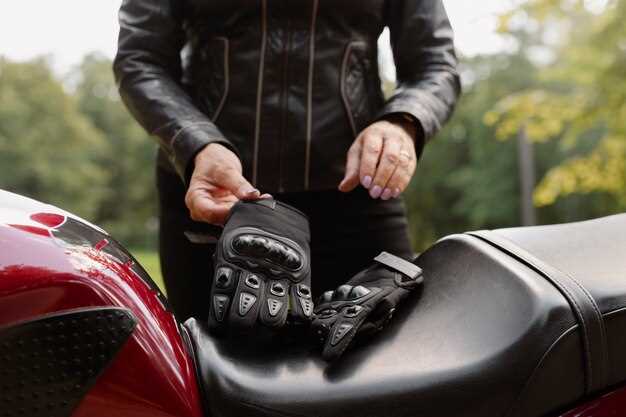

Motorcycle tires are the sole point of contact between the rider and the road, making their condition crucial for safety and performance. Regular tire inspections help to identify issues before they escalate into serious problems, ensuring that every ride is both enjoyable and secure. A thorough understanding of tire maintenance is essential for all motorcycle enthusiasts, whether they are seasoned riders or newcomers to the world of two wheels.
One of the primary reasons to conduct regular inspections is to prevent accidents. Worn or damaged tires can significantly impair traction, especially in wet or variable conditions, increasing the likelihood of skidding or loss of control. Checking for tread depth, air pressure, and visible signs of wear can be pivotal in maintaining optimal grip on the road and enhancing overall safety.
Furthermore, regular inspections extend the life of your tires. By identifying and addressing minor issues such as uneven wear or improper inflation, riders can avoid premature tire replacement and save money in the long run. Investing time in tire care not only ensures a smoother ride but also promotes the overall longevity of the motorcycle, contributing to better performance and reliability.
How to Identify Signs of Tire Wear and Damage

Regular motorcycle tire inspections are essential for safe riding, and knowing how to identify signs of tire wear and damage is critical. Start by examining the tread depth; using a tread depth gauge, ensure that the depth is within safe limits. Tires with worn tread can compromise traction, especially in wet conditions.
Next, look for uneven tire wear patterns, which can indicate misalignment or improper inflation. If one side of the tire is more worn than the other, it may require adjustment of the suspension or alignment. Additionally, check the tire pressure regularly; under-inflated tires can lead to excessive wear.
Inspect the sidewalls for any visible damage such as cuts, cracks, or bulges. These issues can lead to tire failure if not addressed immediately. Furthermore, check for foreign objects embedded in the tread, such as nails or glass, which can cause leaks or punctures.
Pay attention to any vibrations while riding, as they could signal internal tire damage. An unusual sound or handling characteristics can also indicate an issue. If you notice any of these signs, it’s advisable to consult a professional mechanic for a detailed inspection.
What Tools and Techniques are Needed for Tire Inspections
Conducting regular motorcycle tire inspections requires a few essential tools and techniques to ensure safety and performance. Firstly, a quality tire pressure gauge is crucial. Maintaining the correct tire pressure enhances grip, fuel efficiency, and overall handling. Digital gauges provide accurate readings and are often easier to read than traditional ones.
A tread depth gauge is another vital tool. This device allows you to measure the depth of the tire tread, ensuring it meets safety standards. A minimum tread depth of 2/32 of an inch is recommended for safe riding. Some gauges come with built-in indicators for easy reading.
A flashlight is useful for inspecting tires in low light conditions. It helps to identify surface cracks, punctures, or foreign objects lodged in the tread. Coupled with a magnifying glass, it can assist in examining small imperfections more closely.
Additionally, a basic set of tools such as tire levers and a portable air compressor can assist with air adjustments or minor repairs. These tools are essential for riders who may need to make quick fixes while on the road or during a routine check.
Visual inspection techniques are also important. Examine each tire for uneven wear patterns, which can indicate alignment or suspension issues. Check for bulges, cuts, or cracks, and inspect the valve stems for any signs of damage or leaks. Regularly rotating tires can help maintain even wear, so keeping track of wear patterns is vital during inspections.
Lastly, familiarize yourself with the manufacturer’s recommendations regarding inspection frequency and procedures. Understanding specific guidelines for your motorcycle model can lead to more effective inspections and better-informed maintenance decisions.
When to Schedule Routine Tire Checks and Maintenance

Regular tire inspections are essential for maintaining motorcycle safety and performance. It is crucial to establish a schedule for routine checks to ensure that tires remain in optimal condition throughout their lifespan.
Initial Inspection: Perform an initial tire inspection when you purchase your motorcycle, or if you acquire a used bike. Check for any visible damage, irregular wear, or signs of aging. It’s also important to verify the recommended tire pressure as specified by the manufacturer.
Monthly Check-ups: Conduct a monthly inspection of your tires. Look for any cracks, bulges, or embedded objects that could lead to a potential failure. Make sure to check the air pressure when the tires are cold, and adjust as necessary. Under-inflated tires can lead to poor handling and increased wear, while over-inflated tires reduce the surface contact with the road.
Seasonal Maintenance: Schedule routine maintenance at the beginning of each riding season. This is particularly relevant if you use your motorcycle sporadically. Inspect tread depth to ensure adequate grip, and replace tires that are worn below the minimum tread depth, typically 1/32 of an inch for most motorcycles. Also, consider environmental factors like heat and UV exposure that can cause rubber degradation over time.
Before Long Trips: Before embarking on a long ride, inspect your tires comprehensively. Evaluate not only the surface condition and pressure but also the alignment and balance of the tires. This ensures better handling and maximizes safety on longer journeys, where the risk of tire-related issues can increase.
After Incidents: If you experience a significant impact, such as hitting a pothole or curb, conduct an immediate inspection. This can prevent further complications caused by unseen damage. If you suspect any problems, consult a professional mechanic for a thorough evaluation.
Weather Considerations: Adjust your inspection frequency based on seasonal weather changes. For instance, in cold climates, check tire condition more frequently as temperature fluctuations can affect tire performance. In rainy weather, ensure treads are deep enough to handle wet conditions effectively.
By adhering to these timelines for tire checks and maintenance, motorcyclists can enhance their ride safety, improve performance, and prolong the life of their tires.






